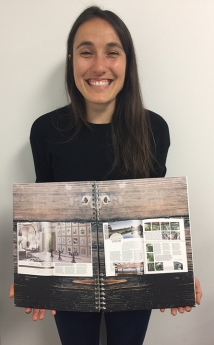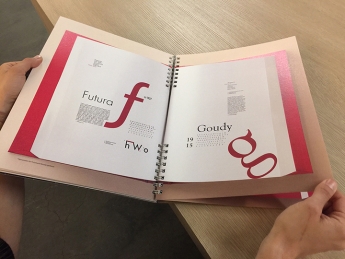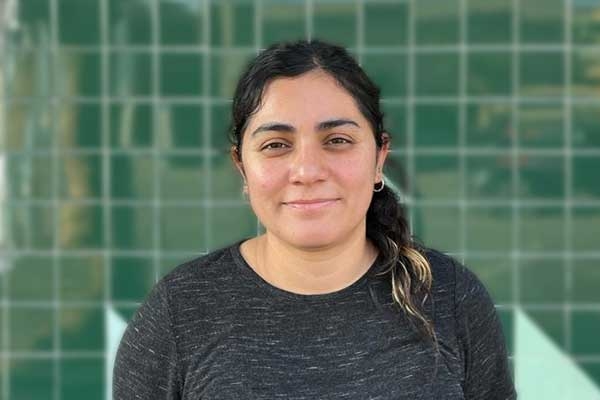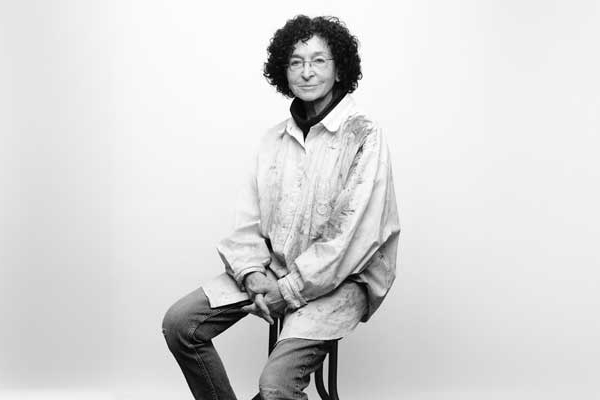Named after artist Paul Cézanne, Bay Area native Cezanne Rothberg turned to graphic design after a year and a half as a travel photographer and writer in Bali. Upon returning to California to be closer to family and to expand her design toolbox, Cezanne chose our graphic design program after comparing it to other programs in the area. “I was always drawn to graphic design but didn’t know the best way to dive deeper into that world,” she explains. “Extension seemed to be the perfect combination of hands-on instruction and independence, without having to commit to an expensive 3- or 4-year program.”
Completing the program in just one year, Rothberg quickly landed her first graphic design gig: junior graphic designer at Serena & Lily.
You finished the program in fall 2017. What was your experience like?

It was a whirlwind, to say the least. I was ready to put in the hours, but I wasn’t anticipating the deadlines that came along with the program, especially in the Graphic and Web Design Portfolio course. Without it though, I would not have been able to learn the essentials of graphic design in such a short time, compile all of my work and create my portfolio. There was a moment one week before my portfolio was due when I was pretty stressed, trying to get all of my pieces ready, moving the files between Illustrator, InDesign and Photoshop quickly. In the midst of all that, I suddenly stopped and realized that a year before, I would have had no idea how to do what I was currently doing. That’s when it hit me that I had gained an enormous amount from the program.
Did you have a favorite course?
That’s a tough question. Reflecting back, each taught me something that I carry with me in my practice. One course that stands out is Illustrator I, as I wasn’t familiar with the software at all prior to enrolling and it completely changed the way I design. I also loved learning about typography in Typography Fundamentals and how it is such an important aspect of good design.
Any highlights about your instructors?
Though I didn’t at the time, I now appreciate instructors who set strict deadlines that I would have otherwise dismissed. The instructors were very approachable, both during and outside of class, and did a good job of making sure that what we were learning was relevant to current industry standards.
What were your interactions with classmates like? Did working with other design students inspire, intimidate or motivate you?
I repeatedly said throughout the program that one of my favorite things was the opportunity to work with like-minded people, all working toward the same goal. This is one of the major differences between a hands-on program like Extension and self-taught instruction online: the chance to learn from others. Seeing all of the different ways to approach a particular design challenge taught me a lot.
It was easy to be intimidated by those doing work I thought was cooler than mine, but being surrounded by that has brought my own quality of work to the next level. It would have been a far more stressful experience had I not had others in the same boat as me.

How did you career-shift after finishing the portfolio course?
I felt proud of my portfolio and confident that I had reached a baseline level of graphic design skills that I could advertise to companies. Compiling my work into a print and digital portfolio gave me a legitimate foundation to build on. I now had a body of work to showcase to potential employers. The portfolio was a great talking piece in interviews: I could actually show what I had learned in the graphic design program instead of just talking about it.
When I began the program, I always thought I would complete the courses and start doing freelance work. The more I learned, however, the more I realized that I had a lot to learn, and that I wasn’t going to get there on my own. I started searching for a mentee role, one where I could dive into a team of creatives and absorb as much as possible.
What would you recommend to new students who are deciding on if this program is right for them?
I would recommend that you ask yourself what you would like to learn how to do by the time you complete the program. It’s good to have an idea going into a course of what you want to get out of it to make the best use of your time. The instructors were all very generous with their time—I would advise building relationships with them and picking their brains as much as possible.
Also, don’t be afraid to sketch! I am not an illustrator by any sense of the word, but learning to get my thoughts out of my head and onto paper made my design process so much smoother. And keep all of your process work—you, your instructors and employers like to see how you get from a to z.
And, can you tell us a bit about your new job? How are you enjoying your design career?
I am loving it so far. I am one of three on our Web Design team, so my day-to-day consists of designing assets to be approved by our Creative Department and sending off to be coded. These assets include image and type blocks that need to be placed throughout our site, product stories that get emailed to our clientele, digital invitations to promote an event happening in one of our retail stores, web ad, and more.
Coming into this position, I was excited about working within brand parameters, as opposed to making up brand parameters for each new project, and that aspect has measured up to what I hoped it would be. It was also reassuring to come into an already-efficient workflow and be able to focus on the nitty design details, and leave the e-commerce and marketing concerns to their respective departments.



